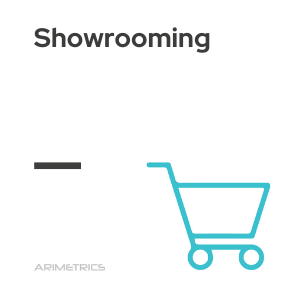 Definition:
Definition:
This defines the consumer behavior consisting of buying a product through the internet,which they have previously looked at and decided in a physical establishment.
The opposite behavior to showrooming would be ROPO,where whereas consumers purchase in a store the product or service they have previously seen on the Internet.
Why showrooming is practiced
Over the years since the arrival of the Internet, there has been a process of reversion from the web to showrooming. Initially, the Internet produced a higher rate of distrust in consumers, who felt safer acquiring the product physically. However, over time this distrust has disappeared and today consumers find in showrooming numerous advantages over the traditional purchase process.
The main one is undoubtedly savings. Electronic stores, not having the high costs of a physical trade, have much more competitive prices so that we can find considerable discounts compared to conventional establishments.
Another reason is comfort. When the volume of purchases is high, or we are talking about a product of large size or weight, having the option of having it arrive directly at home becomes an added value for the consumer.
How to compete against showrooming
In case of owning a physical establishment there are certain actions that can reverse the showrooming process and earn you the engagement of your customers in physical:
- It offers added value:if you offer a service attractive enough that it cannot be given online, your customers will prefer to buy in the physical store.
- Exclusive content:to offer for sale products that can only be purchased physically.
- Convince the consumer of your advantages:do not pay for shipments or wait for delivery, more agile returns … There are numerous advantages of the physical format compared to the online one with which you can convince your customers.
